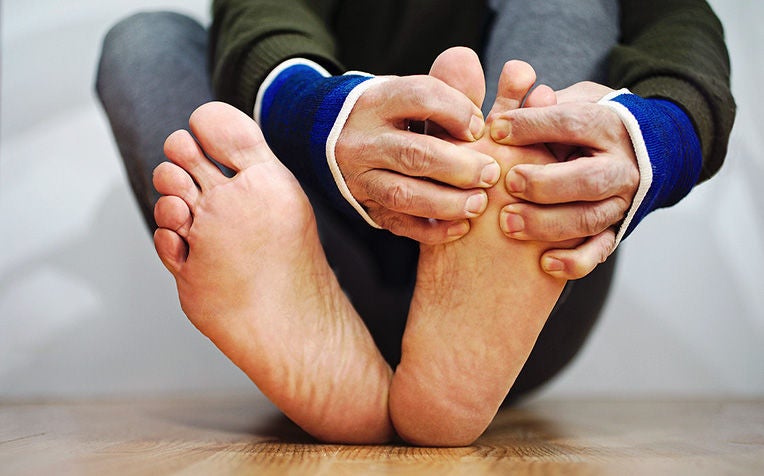
Diabetes foot risks can be classified as 'low', 'moderate', 'high' and 'active' categories.
Information provided by the Podiatry Department at Singapore General Hospital (SGH), a member of the SingHealth group.
Changes in your blood vessels and nerves can occur very gradually and you may not notice them. It is thus essential for you to undergo a foot screening every year.
Your foot screening has shown that you are currently at this risk category of developing foot complications (including amputations) due to diabetes:
| |
'Low' Diabetes Foot Risk
- You have adequate blood supply and sensation in your feet
- You do not have any foot wounds or foot deformities
- Your feet are in good condition
What you need to do
Check your feet daily, and keep your blood sugar levels well controlled.
| |
'Moderate' Diabetes Foot Risk
Assessment of your feet shows that you have one or more of the following risk factors:
- Some loss of sensation in feet
- Hard skin on the feet
- Blood supply to feet is reduced
- Change in shape of your foot
What you need to do
It is important for you to take care of your feet. Check and look after your feet daily, and keep your blood sugar levels well controlled.
| |
'High' Diabetes Foot Risk
Assessment of your feet shows that you have one or more of the following risk factors:
- Loss of sensation in feet
- Hard skin on the feet
- Blood supply to feet is reduced
- Change in shape of your foot
- History of lower limb wound
- History of lower limb amputation
What you need to do
As your feet are at high risk of developing foot wounds, it is important for you to take extra care of your feet. Check and look after your feet daily, and keep your blood sugar levels well controlled.
| |
'Active' Diabetes Foot Risk
At present, you have one or more of the following:
- Active foot wound
- Severe lack of blood supply to the foot
- Spreading infection
- A red, hot and swollen foot with or without the presence of pain
- Gangrene
What you need to do
To reduce the risk of worsening foot complications (including amputations), it is important for you to take extra care of your feet, and see the podiatrist regularly.
Please take note
- If your eyesight is impaired, get your caregiver, family member or helper to help you with the care of your feet
- If you notice any signs of infection or non-healing wounds, please seek medical help immediately
Your healthcare professional will inform you of your next foot screening/podiatry appointment date.
Click the link to learn how diabetes affects the feet.
Click the link for ten steps to healthy feet.
Click the link for tips to avoid diabetes foot complications.
Click the link for what to do during a diabetes foot emergency.
Ref: M19
Contributed by


















 Get it on Google Play
Get it on Google Play